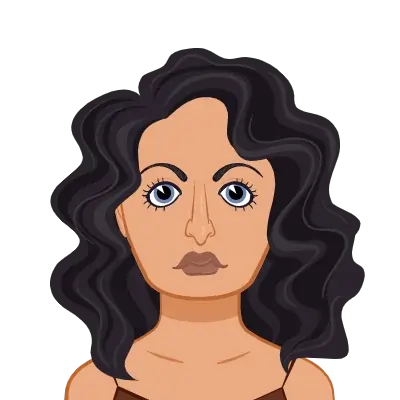Introduction:
OpenGL is an API (Application Programming Interface) that has revolutionized the way we create visually immersive experiences in the field of computer graphics. As 2023 approaches, numerous innovative and exciting topics emerge for developers looking to start their next OpenGL project. The goal of this blog from coding assignment help is to highlight ten important issues that promise to influence OpenGL development in the upcoming year. This list includes a wide range of opportunities to push the limits of graphics programming, from real-time ray tracing and procedural generation to virtual reality (VR) and augmented reality (AR) applications. Global illumination, shader effects, simulations and physics, multi-threading and parallelism, post-processing and image effects, GPU computing, and mobile graphics optimization are some of the additional topics in OpenGL Assignment we will examine. Developers can develop new levels of creativity and technical mastery by exploring these subjects, allowing them to produce visually stunning and interactive experiences that have a lasting impression. So let's set out on this adventure together in 2023 and discover the exciting world of OpenGL.
Real-time Ray Tracing:

Real-time ray tracing has revolutionized computer graphics by allowing creators to achieve previously unheard-of levels of visual realism. Ray tracing generates stunningly accurate lighting, shadows, reflections, and refractions by simulating the path of light rays as they interact with virtual objects in a scene. Real-time ray tracing is now easier to use than ever thanks to recent hardware improvements and the incorporation of ray tracing APIs like NVIDIA's RTX. Real-time ray tracing can take your OpenGL project's visual quality to new heights by creating immersive environments and lifelike lighting effects that captivate users' senses in virtual worlds. Real-time ray tracing is a hot topic in 2023 that promises to push the limits of what is aesthetically possible in computer graphics, regardless of whether you're developing a video game, architectural visualization, or animation.
Procedural Generation:
Procedural generation is a captivating and potent technique in computer graphics that enables creators to produce enormous amounts of dynamic content algorithmically. Procedural generation opens up a world of possibilities for producing a variety of landscapes, textures, and objects by utilizing OpenGL's capabilities. The creation of realistic terrain, forests, cities, and even entire worlds is possible with the help of noise functions, fractals, and other algorithms. The appeal of procedural generation lies in its capacity to produce distinctive, immersive environments that invite endless exploration and variety. You can give users dynamic, interactive experiences that change every time they interact with your application by integrating procedural generation techniques into your OpenGL project. Procedural generation in 2023 is a hot topic that allows you to push the limits of creativity and present captivating content to your audience, whether you're creating a game, simulation, or interactive visualization.
Virtual Reality (VR) and Augmented Reality (AR):
In recent years, augmented reality (AR) and virtual reality (VR) have skyrocketed in popularity, completely changing how we interact with digital content. Developers can create immersive, interactive experiences that blend the real and virtual worlds by incorporating OpenGL. While AR superimposes virtual objects onto the real world to improve our perception of reality, VR transports users to entirely virtual environments where they can explore and interact with 3D spaces. In 2023, VR and AR will still be in the news because they present countless opportunities for gaming, education, training, and other sectors. Developers can create engaging virtual reality (VR) worlds, lifelike simulations, and augmented reality (AR) applications by utilizing the power of OpenGL. When developers use OpenGL and VR/AR technologies together, they can create truly transformative experiences that engage users deeply and personally and completely change how we perceive and interact with digital content.
Global Illumination:
A key component of computer graphics, global illumination simulates indirect lighting interactions in a scene to produce a rendering that is both realistic and visually appealing. Developers can achieve stunning lighting effects, such as precise reflections, supple shadows, and color bleeding, by integrating global illumination techniques into an OpenGL project. Global illumination is still a hot topic in 2023 as hardware and rendering algorithms advance their usability. Global illumination improves the visual quality of virtual environments by adding depth and realism through the use of radiosity, photon mapping, and other sophisticated methods. Developers can create visually appealing scenes that immerse users in realistic environments and raise the level of realism and authenticity of their projects by incorporating global illumination into OpenGL projects.
Shader Effects:
Shader effects enable real-time vertices and fragment manipulation to produce breathtaking visual effects, and they have grown to be an essential tool in the toolbox of computer graphics developers. Developers can unleash their creativity and give their projects life with a variety of shader affects thanks to OpenGL's shader capabilities. Shaders make it possible to create dynamic and aesthetically pleasing scenes by enabling procedural texturing, image processing, and particle systems. In order to add an additional level of visual quality, post-processing effects like motion blur, depth of field, and bloom can be used. Developers can transform commonplace scenes into extraordinary ones using the power of shaders in an OpenGL project, mesmerizing users with breathtaking visual experiences that push the limits of what is possible with computer graphics. Shader effects are still a hot topic in 2023 and provide countless opportunities for creativity and innovation in the OpenGL development community.
Simulations and Physics:
In the field of computer graphics, simulations, and physics-based projects have become intriguing and in demand. Developers can produce interactive, visually appealing simulations that imitate real-world phenomena by utilizing OpenGL's capabilities. The foundation for implementing precise and realistic physics simulations is provided by OpenGL, which covers everything from rigid body dynamics and particle systems to fluid dynamics and cloth simulations. The use of these simulations is possible in a variety of fields, such as gaming, virtual prototyping, and scientific visualization. Developers can produce immersive experiences that demonstrate the behavior and interactions of objects in a virtual environment by integrating simulations and physics into an OpenGL project. In 2023, simulations and physics will still be in demand, providing countless opportunities to develop engaging applications that engage users and push the limits of computer graphics.
Multi-threading and Parallelism:
These techniques are now fundamental to graphics programming and allow programmers to increase the speed and responsiveness of their OpenGL projects. Utilizing the power of parallel computing is essential given the rising popularity of multi-core processors. Developers can efficiently use the CPU resources at their disposal by spreading out rendering tasks like geometry processing and shading across multiple threads by utilizing OpenGL's multi-threading capabilities. For tasks like physics simulations or real-time data processing, parallel algorithms can also be used, further enhancing the application's performance. Developers can achieve significant performance improvements in OpenGL projects by effectively utilizing multi-threading and parallelism. This enables real-time rendering of complex scenes and improves the user experience. Multi-threading and parallelism are still in demand in 2023, giving programmers the chance to take advantage of new hardware features and expand the capabilities of real-time graphics applications.
Post-processing and Image Effects:
Post-processing and image effects are essential for improving the visual quality and all-around aesthetic appeal of OpenGL projects. Developers can add a variety of effects to the final rendered image using post-processing techniques, turning it into a visually stunning masterpiece. Developers can effectively use effects like bloom, high dynamic range (HDR) rendering, tone mapping, anti-aliasing, and depth of field thanks to OpenGL's support for framebuffer objects (FBOs). These effects give the rendered scenes depth, realism, and artistic flair, creating visually appealing and engrossing visuals. Post-processing and image effects in an OpenGL project offer a potent toolkit to improve the overall visual experience, whether it's adding a dreamy atmosphere with a gentle blur or amplifying the intensity with vibrant colors and highlights. Post-processing and image effects will still be in demand in 2023, giving developers the tools, they need to make visually stunning and immersive applications that make an impression on users.
GPU Compute:
In the world of computer graphics, GPU computing has emerged as a revolutionary technology that enables programmers to use the powerful processing power of current GPUs for non-graphic tasks. Because OpenGL supports compute shaders, programmers can effectively use the GPU's parallel processing power to carry out challenging calculations. GPU computing opens up a whole new world of possibilities for speeding up computations, from simulations to machine learning and data processing. Developers can significantly improve performance by offloading computations to the GPU, enabling real-time processing of large datasets and sophisticated algorithms. GPU computing is still a popular topic in 2023, giving programmers the chance to realize the GPU's full potential and produce high-performance applications that push the limits of what is feasible in terms of speed, effectiveness, and scalability.
Mobile Graphics and Optimization:
In the ever-expanding world of mobile devices, the importance of mobile graphics and optimization has grown. Developers must optimize their OpenGL projects in light of the increasing use of smartphones and tablets to ensure a fluid and beautiful user experience. Reduced draw calls, hardware instancing, effective memory management, and shader complexity optimization are some examples of techniques used in mobile graphics optimization. High frame rates and responsive user interactions are possible for developers to achieve by optimizing resource usage and utilizing the capabilities of contemporary mobile GPUs. Additionally, mobile graphics optimization makes it possible to develop visually stunning applications that maximize the constrained processing speed and battery life of mobile devices. As developers work to deliver exceptional performance and captivating visuals on mobile platforms, improving the overall user experience and expanding the reach of their OpenGL projects, mobile graphics, and optimization will continue to be hot topics in 2023.
Conclusion:
In conclusion, OpenGL is still a potent tool for producing eye-catching graphics and engaging 3D applications. In the area of OpenGL development, there are many fascinating topics that will be explored in 2023. There are many opportunities to push the limits of computer graphics, from global illumination and VR/AR experiences to real-time ray tracing and procedural generation. You can build visually stunning applications that captivate users and highlight your abilities as a developer in this constantly changing industry by embracing these trending topics and incorporating them into your next OpenGL project.
